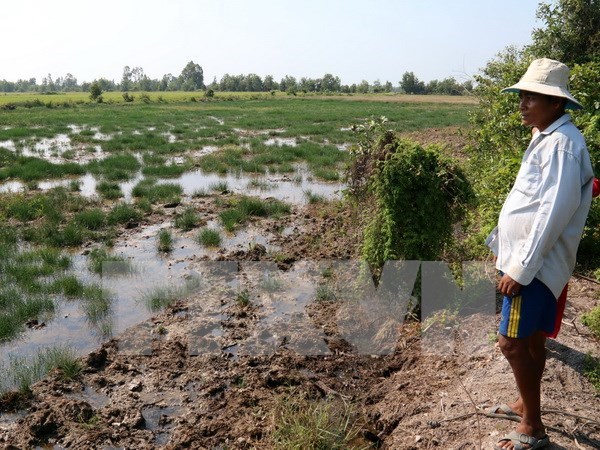Mekong Delta provinces tackle saltwater intrusion
The Mekong Delta provinces of Hau Giang and Long An are taking measures to cope with severe saltwater encroachment.
 Illustrative image (Photo: VNA)
Illustrative image (Photo: VNA)Director of the Hau Giang’s Department of Agriculture and Rural Development Nguyen Van Dong said the province needs over 1 trillion VND (45 million USD) through to 2020 to enact long-term solutions to deal with the issue and protect over 82,000 hectares of rice fields.
With that amount of money, the province will focus on building dyke systems, water reservoirs, and irrigation facilities, he said.
The locality aims to complete the Vi Thanh – Long My dyke system to prevent salinity in 2016 and the second phase of a similar project from O Mon district in Can Tho city to Xa No canal in Hau Giang province.
It is also coordinating with the Mekong Delta Rice Research Institute to study growing a rice variety which is resistant to climate change and saline intrusion.
Meanwhile, Vice Chairman of Long An’s People’s Committee Nguyen Van Duoc said his locality has directed the agriculture sector to work with relevant ministries, sectors, scientific agencies and other localities to reduce salinity levels across rivers, find new resistant crops, and change to plant and animal structures that are adaptive to climate change.
Around 11,000ha of rice in the province have been damaged, with losses amounting to 71 billion VND (3.2 million USD).
Saltwater is likely to intrude as far as 70km in the Tien and Hau Rivers, the two main tributaries of the Mekong River in the Delta, according to the National Centre for Hydro-meteorological Forecasting.
Around 300,000 ha (over 20 percent) of rice fields in the winter-spring crop of 2015-2016 in the delta will be prone to drought and saltwater intrusion./.













